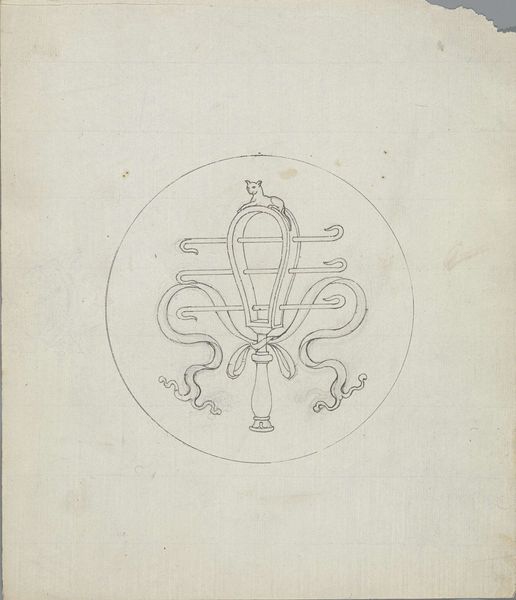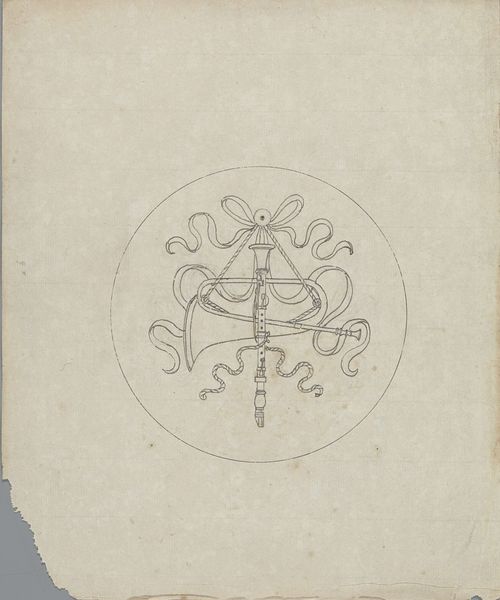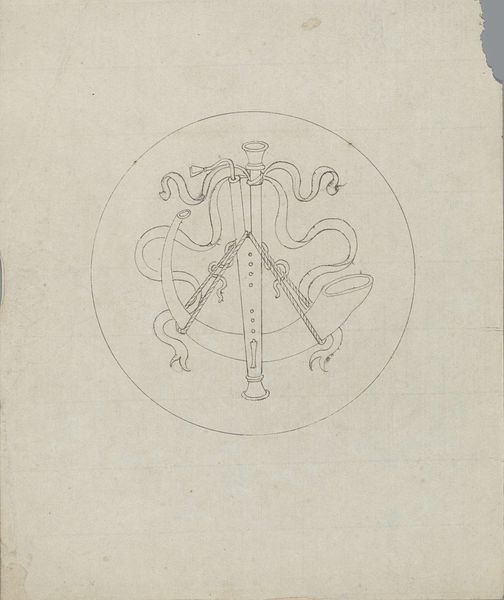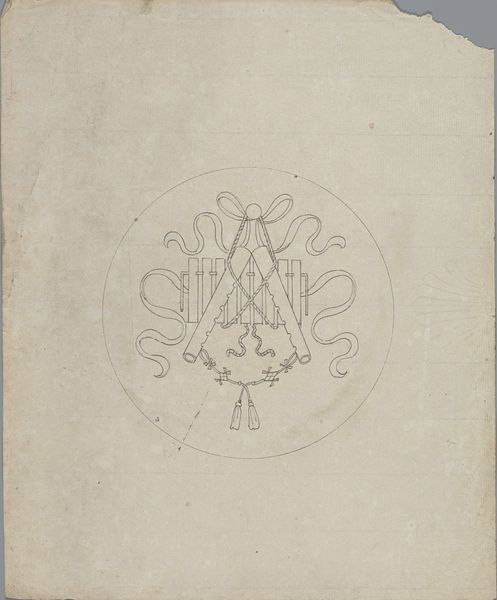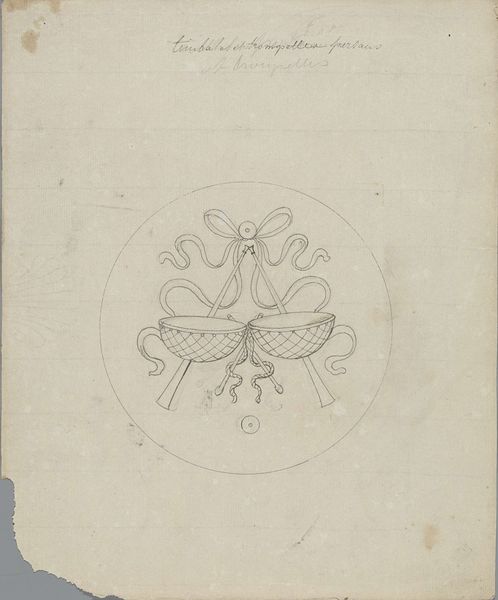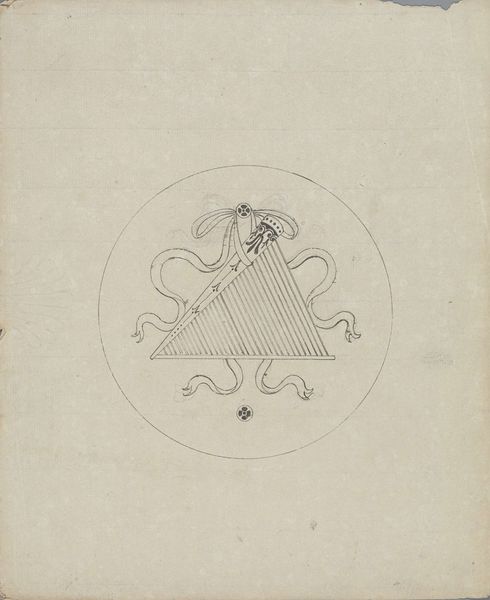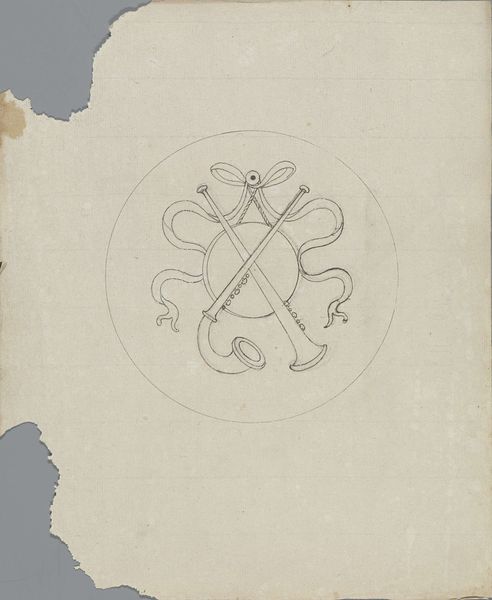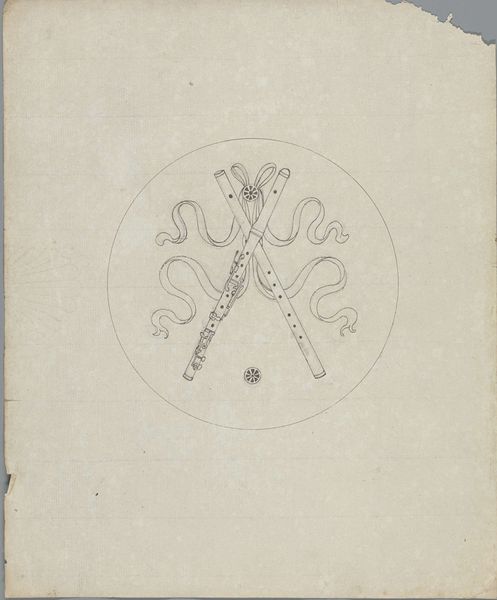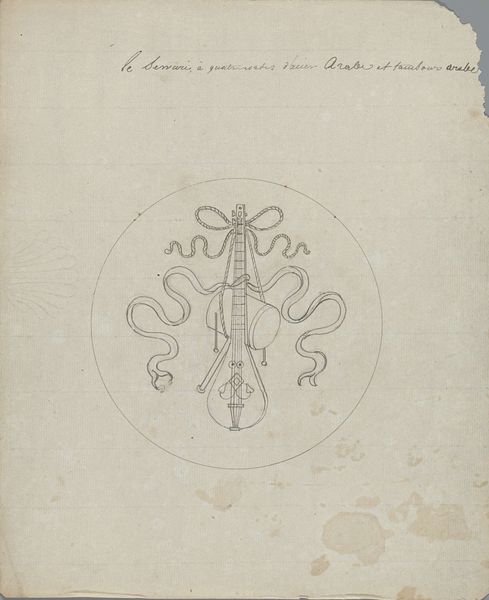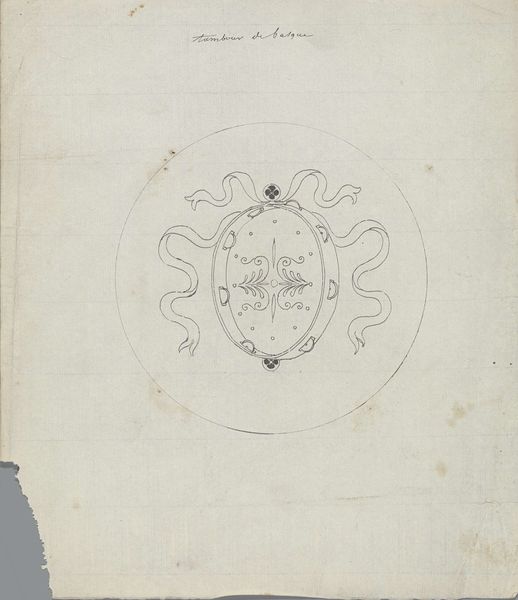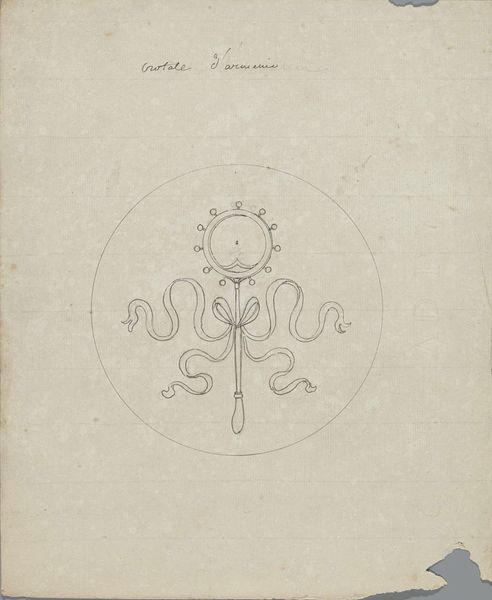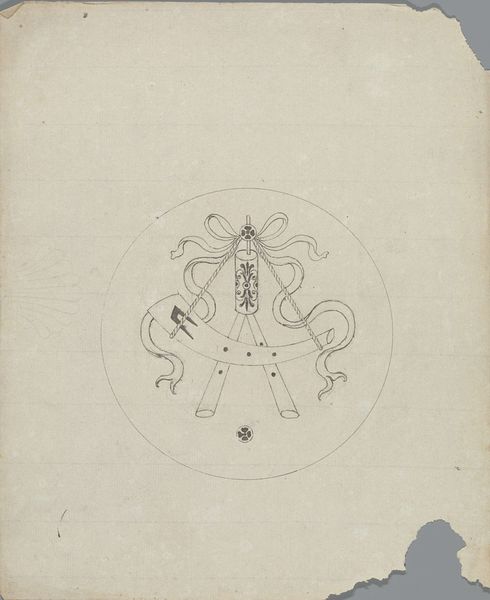
drawing, paper, pencil
#
drawing
#
aged paper
#
toned paper
#
light pencil work
#
blue ink drawing
#
old engraving style
#
paper
#
personal sketchbook
#
geometric
#
pencil
#
ink colored
#
sketchbook drawing
#
watercolour illustration
#
sketchbook art
Dimensions: height 253 mm, width 208 mm, diameter 123 mm
Copyright: Rijks Museum: Open Domain
Editor: This is Pierre Félix van Doren's "Cor de chasse moderne," created before 1828. It's a pencil and ink drawing on paper, and I’m immediately struck by how geometric the composition is. The delicate lines forming shapes seem almost architectural in their precision. What do you see in this piece? Curator: The primary elements, the horn, triangle and circle, arranged symmetrically, offer a fascinating study in form and the relationship between geometric and organic shapes. The artist's manipulation of line—observe the contrast between the rigid triangle and the sinuous curves of the horn and ribbons—creates a dynamic visual tension. Note also the subtle tonality achieved through the pencil work, lending depth to an otherwise flat plane. Do you observe how the ribbon's flowing lines seem to almost defy the rigid geometricity surrounding it? Editor: I do, yes! It almost seems like a purposeful subversion of the geometric, or maybe even a playful counterpoint. Does the central 'button' within the triangle bear symbolic significance? Curator: Arguably, that’s a point open to interpretation. From a Formalist point of view, it punctuates the overall design, and its visual weight balances the composition, acting as a fulcrum of sorts. Whether it represents something specific is secondary to its function within the visual framework. Consider how its circularity contrasts with the angularity of the triangle and echoes the external circular border. Editor: That's interesting, I hadn't thought about it as a visual counterbalance. So, we're focusing on how the different shapes play off of each other to create meaning? Curator: Precisely. The focus remains on the elements within the frame and their inherent relationship, divorced from external historical or cultural contexts. The artistic effect emerges from how line, shape, and form cohere and contradict one another within the drawing itself. Editor: I see it now! This exercise helped me appreciate a different way of viewing art by simply focusing on its construction. Curator: Indeed! It is a different entry point into decoding the creative choices of the artist, by prioritizing compositional attributes.
Comments
No comments
Be the first to comment and join the conversation on the ultimate creative platform.
